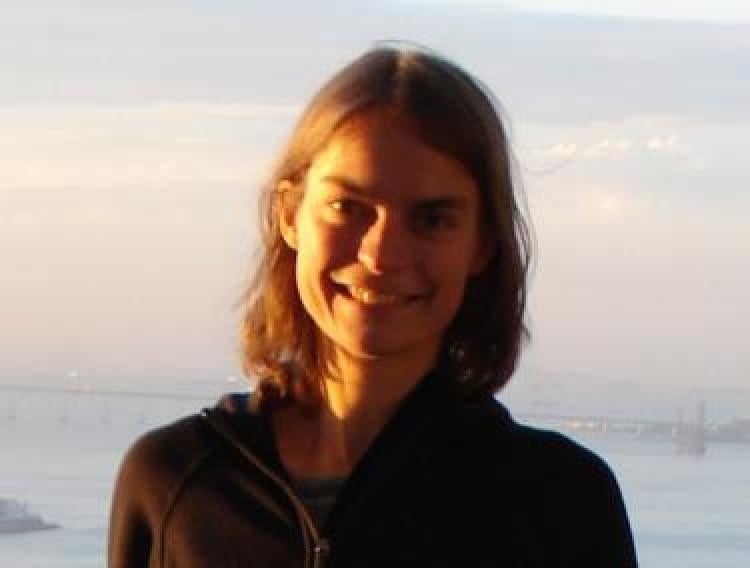Earth scientist wins $2.5 million grant to advance geochronology
With National Science Foundation support, CU Boulder-led initiative aims to attract under-represented people to geosciences and foster grassroots ideas at frontier of ‘inclusive and collaborative science’
A team of researchers led by an Earth scientist at the University of Colorado Boulder has won a $2.5 million grant from the National Science Foundation (NSF) to advance geochronology, the study of the age of Earth materials—a field that is key for understanding Earth processes and history.
NSF’s support will establish an initiative called Advancing Geochronology Science, Spaces, and Systems (AGeS-cubed or AGeS3). The effort aims to boost access to geochronology data and expertise to advance scientists’ understanding of Earth systems, launch a platform to attract under-represented minorities to the geosciences, and test grassroots ideas at the “frontier of inclusive and collaborative science.”

Rebecca Flowers
Rebecca Flowers, CU Boulder professor of Geological Sciences, is the principal investigator on the five-year effort. Her collaborators are CU Boulder Associate Professor Leilani Arthurs, Professor Ramon Arrowsmith of Arizona State University and Vicki S. McConnell, executive director of the Geological Society of America.
Geochronology data are essential for addressing first-order questions in Earth system science related to climate change, biologic and landscape change, earthquake cyclicity and hazards and solid Earth evolution. But the National Academies have noted barriers persist to geochronology data access, technical innovation and training. Flowers and her colleagues intend to address these needs through three micro-grant programs.
Flowers recently answered five questions from this publication about the project, which was funded through the NSF’s Frontier Research in Earth Sciences Program. The questions and answers appear below:
Question: You and your colleagues note that the National Academy has repeatedly highlighted the challenges for geochronology data access, technical innovation and training; can you summarize the nature of those challenges?
Answer: The 2020 National Academies report “A Vision for Earth Sciences, 2020-2030: Earth in Time” (2020 Earth in Time report) emphasizes that there are challenges associated with the current funding model in which individual investigator-based labs are supported by awards to address specific research questions, with little or no funds provided to support lab infrastructure, technique development or training activities. Although there are hundreds of scientists in need of data from these labs, labs struggle to cover the costs of their operations and commonly are not in a position to serve these broader needs. This has hindered the development of new methods, instruments and collaborative applications that are required to address Earth science questions.
I have always been fascinated by the Earth and especially by the stories that rocks hold about Earth history. It’s amazing what individual, 100-micron-scale mineral crystals within rocks can tell us about mountain-belt-scale or even planetary-scale histories.
Q: You and your collaborators propose to launch an initiative to advance geochronology “science, spaces and systems,” and you propose to do this via strategic, micro-award grants. What can you tell us about the idea of focusing micro-grants, rather than larger grants, toward this end?
A: It has been suggested that micro-funding has a transformative impact on the sciences, just as micro-loans have done for many populations. The small and flexible AGeS grants can catalyze collaborations between geochronology labs and others in different disciplines, enabling important scientific advances that may not happen within the bubble of more standard grants.
A common element of the three micro-support programs is making small investments that promote interdisciplinary science and cumulatively advance the field.
Q: Researchers in the STEM disciplines often discuss how to attract more under-represented people to those fields. What can you tell us about the proposed platform to attract under-represented minorities to the geosciences?
A: The goals of the new AGeS-DiG (Diversity in Geochronology) program are to engage, train and educate students who have not traditionally had equal access to geochronology data and training, and to generate and test innovative ideas to expand geochronology access for these students. The AGeS-DiG program plans to make 30 awards of up to $15,000 each to support creative geochronology projects or initiatives that address these aims.
Priority will be given to projects that emphasize authentic research experiences, mentor multiple students and foster a cohort experience for participants. Examples of possible AGeS-DiG projects include opportunities for underserved groups to visit labs in-person to acquire data for project(s); training of an underrepresented cohort in geochronology methods and remote-data acquisition for a project; or other innovative concepts.
Q: You intend to “test grassroots ideas at a frontier of inclusive and collaborative science.” Could you share an example of a grassroots idea that could be tested in such a way?
A: The AGeS-TRaCE (TRaining and Community Engagement) program is a new funding mechanism that seeks and supports community-driven ideas for addressing geochronology needs, such as such as capturing, formalizing and disseminating not-yet-standardized geochronology knowledge that is not widely available and providing opportunities for collaborative discussion on key geochronology challenges related to human-, technical- or cyber-infrastructure.
Examples of AGeS-TRaCE projects include accessible webinars, tutorials and workshops on best practices, lab procedures, instrument design, statistics and uncertainties or data interpretation; and focused meetings to discuss interlaboratory calibration, spikes, new and emerging chronometers, data management systems, modeling tool development or other capabilities needed for the future.
Q: What drew you to focus on geology generally and geochronology specifically in your research?
A: I have always been fascinated by the Earth and especially by the stories that rocks hold about Earth history. It’s amazing what individual, 100-micron-scale mineral crystals within rocks can tell us about mountain-belt-scale or even planetary-scale histories.
As a geochronologist, I have my own “time machines” in the lab to learn about the past. The AGeS program is about providing a broader community of scientists with funding and collaborative access to these instruments to unravel important stories about the Earth.

